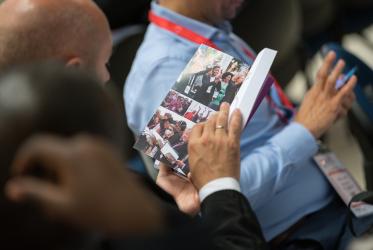Introduction
The flowers appear on the earth; the time of singing has come.
— Song of Songs 2:12
Our Lord, then, was crucified, died, and was buried on Friday, before the setting of the sun, which was the first of his “three days” in the grave; observing the mystical sabbath, that “seventh day” in which it is said that the Lord “rested from all the work that he had done” (Gen. 2:2-3). He passed all of Saturday in the grave, and he arose “early on the first day of the week, while it was still dark,” (John 20:1)on Sunday, the third day, which, according to the Hebrew reckoning, began after sunset on Saturday.
The veneration of the risen Christ by his disciples and the worship offered to him as “Lord,” seated at the right hand of the Father after his ascension, forms the axis of Christian worship. The meals that the disciples ate with the risen Lord give meaning to the Mystical Supper and become the first form of the Divine Eucharist. All these things happen because the resurrection is an eschatological and not simply a historical event. It marks God’s final act in history, the victory over the “last enemy,” which is death, and the dawning of the “last day.” This “last day,” which became a reality for the last Adam, will at the second coming become a reality for all creation.
From the very beginning, faith in the risen Christ involved two elements. On the one hand, it involved an encounter with the risen Lord especially in the form of sharing meals with him. On the other hand, it involved the expectation of his return, of his parousia, which would bring an end to suffering, injustice, death, and the persecution of his followers. This meant that Christian spirituality had to be experienced as a dialectic between history and eschatology, a firm conviction that the kingdom of God had come and, at the same time, a fervent prayer and expectation that it may come soon.
As we celebrate this joyous resurrection, we greet and embrace one another in Christ, thereby demonstrating our Saviour’s victory over death and corruption, and the destruction of our ancient enmity with God, and his reconciliation toward us, and our inheritance of life everlasting. The feast itself is called Pascha, which is derived from the Hebrew word which means “passover”; because Christ, who suffered and arose, has made us to pass over from the curse of Adam and slavery to the devil and death unto our primal freedom and blessedness.
In the days just before the celebration of our Lord’s glorious resurrection, we make our preparations in eager anticipation. We prepare the Paschal Lamb, boil and dye our eggs, bake our sweet breads, make or procure our cheeses, and gather and prepare any other festal foods we might desire. After the Paschal liturgy, everyone cracks their egg against the egg of their neighbour, and then peels and eats the egg.
Bible passage: Mark 16:1-8
When the sabbath was past, Mary Magdalene, and Mary the mother of James, and Salome bought spices, so that they might go and anoint him. And very early on the first day of the week, when the sun had risen they went to the tomb. They were saying to one another, “Who will roll away the stone for us from the entrance to the tomb?” When they looked up, they saw that the stone, which was very large, had already been rolled back. As they entered the tomb, they saw a young man, dressed in a white robe, sitting on the right side; and they were alarmed. But he said to them, “Do not be alarmed! You are looking for Jesus of Nazareth, who was crucified. He has been raised; he is not here. Look, there is the place they laid him. But go, tell his disciples and Peter that he is going ahead of you to Galilee; there you will see him, as he told you.” So they went out and fled from the tomb, for terror and amazement had seized them; and they said nothing to anyone, for they were afraid.
Reflection
From ancient times until today and to the end of the ages, the power and witness and character of the church is the life in the risen Christ and the victorious encounter with him in the course of all calamities. And the joyous witness to the whole world, to every human being and every age, that there is a possibility of life.
What is required is the boldness, the daringness of faith. This happened to the myrrh-bearing women. With an overflowing love for their teacher, what could they do? They took myrrh to anoint their teacher who had died. And so, the result was that they experienced the myrrh of the resurrection – they bore the myrrh which overcomes death. The angel told them, “He has been raised … go, tell his disciples and Peter.” Coming out of the tomb, they said nothing to anyone, for they were afraid. Saying that they said nothing to anyone means that they said everything to everyone. Saying that they were afraid means they did not in any way want to give a false expression of what they had seen or experienced. For he who accepts this experience of the resurrection does not speak, and yet he is speaking continuously, through his words and his silence.
“The kingdom of life has come, and the dominion of death is destroyed; another birth has come about, a different way of living, another sort of life, an elemental change in our very nature” (St Gregory of Nyssa, On the Three-day Period of the Resurrection). To live eschatologically means to allow God to enter history, not only at the end, but at any other moment in time – made possible by the resurrection as a historic event – thus transfiguring time.
The COVID-19 pandemic is a reminder that we are called to point the way toward calm during the storm and to answer the chaos with justice, mercy, and humility. Those people who struggle and suffer and weep so much are certainly ready to receive the gospel of the resurrection, to enter into the festival of joy so that we might all live together in the church of God, united with the Word, who becomes human in order to save humanity, who is sacrificed for all, who offers all things and embraces all people, even those who crucified him.
St Paul introduced the future as a hermeneutical tool: “For if the dead are not raised, then Christ has not been raised” (1 Cor. 15:16). St Paul intended to indicate that the resurrection of Christ would become pointless if it were not a collective realization, that is, if the whole body were not implicitly “pre-resurrected” with the head. The “prehappening” of the future of the world in Christ’s resurrection speaks of the future’s work in progress within the church.
The church represents the gathering at the banquet of life, where we partake of the food necessary for true existence, the paschal mystery of Christ. The apostles passed on the truth of the resurrection to the church that, particularly during eucharistic gatherings, reveals and celebrates this greatest Christological event.
In the Catechetical Homily of St John Chrysostom, which is read at the end of every Paschal Matins, it is the wonder of the age to come that breaks forth, the victory of life over death, the triumph of ineffable love over human injustice and justice. It dissolves everything and amazes the just and the unjust, the living and those who have fallen asleep. St John Chrysostom calls everyone to the joy of the resurrection. To make this clear, he expresses it in positive terms by talking about “all of you” and in negative terms by talking about “no one”: “Enter all of you into the joy of the Lord. Let all enjoy the feast of faith,” and “Let no one go away hungry. Let no one lament his sins. Let no one fear death.”
The God-man captivates with the countenance that reveals and radiates the unfathomable eschatological newness of Love who once was lifted up to the cross, descended to Hades, and was resurrected from the grave.
Questions for further reflection
- What does “rising from the dead” mean?
- How does a particular generation and culture recognize Christ as their saviour?
- Who is Jesus Christ for every particular existential condition, for each epoch, and not just for the apostolic age?
- What makes Christ the only new thing that has ever appeared under the sun?
- Should we ascribe a self-evident reality to the resurrection, or should we take it as an expected event yet to be confirmed?
Prayer
It is proper and right to hymn You, to bless You, to praise You, to give thanks to You, and to worship You in every place of Your dominion. For You, O God, are ineffable, inconceivable, invisible, incomprehensible, existing forever, forever the same, You and Your only begotten Son and Your Holy Spirit. You brought us out of nothing into being, and when we had fallen away, You raised us up again. You left nothing undone until you had led us to heaven and granted us Your Kingdom, which is to come. For all these things, we thank You and Your only begotten Son and Your Holy Spirit: for all things we know and do not know of, for blessings manifest and hidden that have been bestowed on us. We thank You also for this liturgy, which You have deigned to receive from our hands, even though thousands of archangels and tens of thousands of angels stand around You, the Cherubim and Seraphim, six-winged, many-eyed, soaring aloft upon their wings. (From the Orthodox Liturgical Anaphora)
Hymns
Apolytikion of Great and Holy Pascha
Christ is risen from the dead, by death,
trampling down upon death,
and to those in the tombs He has granted life.
Seasonal Kontakion
Though You went down into the tomb,
You destroyed Hades’ power,
and You rose the victor, Christ God,
saying to the myrrh-bearing women, “Rejoice!”
and granting peace to Your disciples, You who raise up the fallen.
A hymn from Paschal matins
Come, let us drink a new beverage,
not miraculously drawn from a barren rock,
but the fountain of incorruption springing from the tomb of Christ,
in Whom we are strengthened.
About the author
Bishop Maxim (Vasiljevic) is bishop of the Diocese of Los Angeles and Western America of the Serbian Orthodox Church. He earned his doctorate from the University of Athens in the field of dogmatics and patristics in 1999. The focus of his academic work is his long-term study and research on the church fathers, theology, iconology, and other diverse themes. His bibliography includes History, Truth, Holiness: Studies in Theological Ontology and Epistemology (Sebastian Press, 2011) and Theology as Surprise: Patristic and Pastoral Insights (St. Vladimir’s Seminary Press, 2018).






